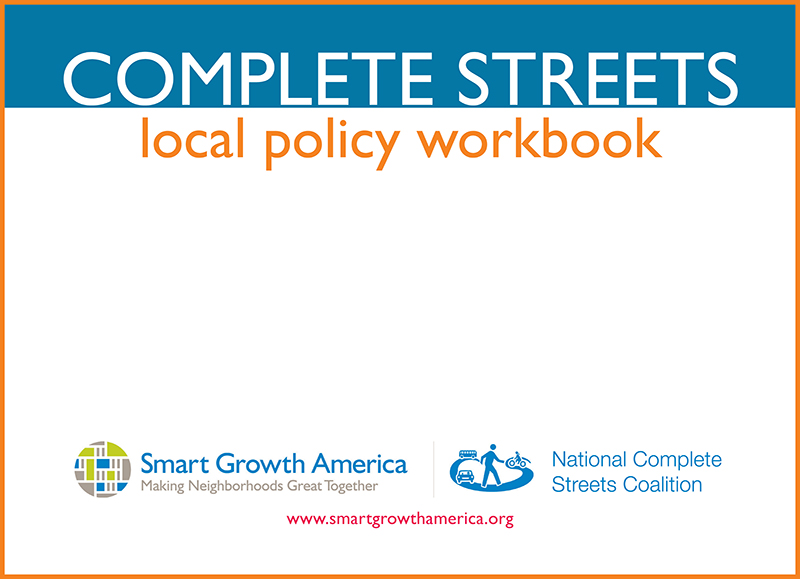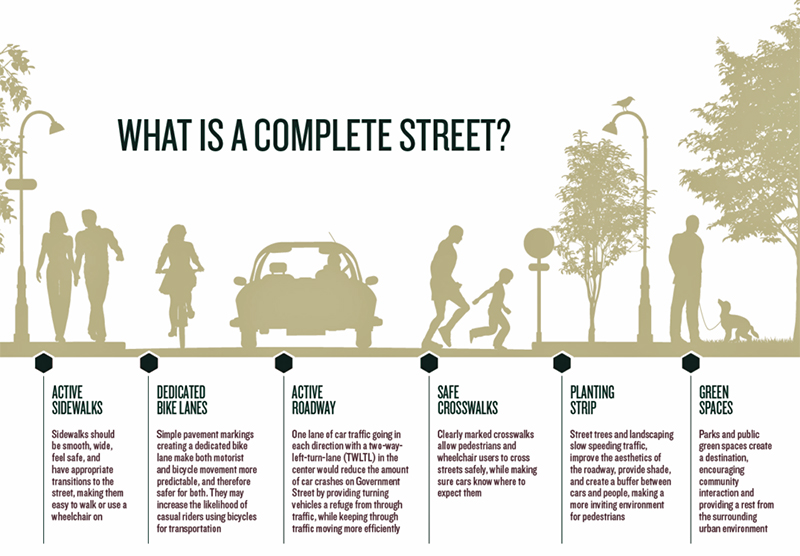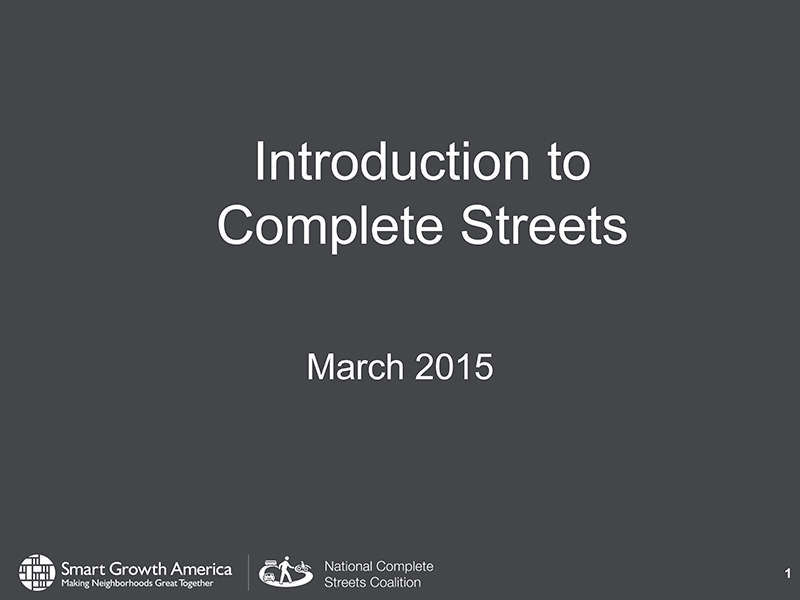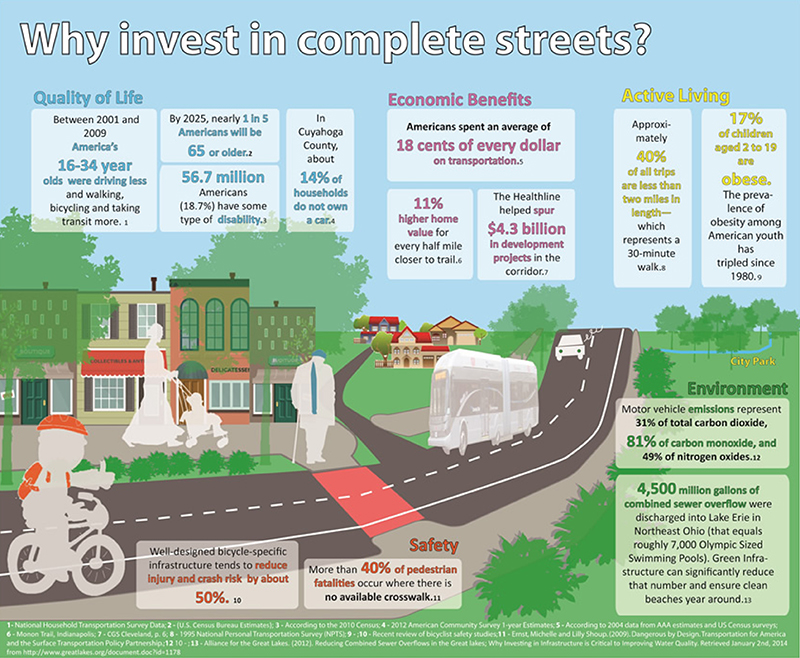
Complete Streets
- Details
- Hits: 14460

Complete Streets
Complete streets can greatly improve quality of life, considering that many people do not own a car and, that more millennials prefer walking and cycling to driving. Modern infrastructure like complete streets permits residents of all ages and abilities to stay active while going about their daily routines. The benefits of Complete Streets also include improved safety through the potential reductions of pedestrian and bicycle accidents on our roadways.
- Transit > Pedestrian > Bicycle > Automobile - along a major transit corridor
- Bicycle > Pedestrian > Transit > Automobile - along a bicycle priority street with bikeways or a bicycle boulevard
- Automobile > Pedestrian > Bicycle > Transit - in an industrial corridor or along a parkway with no bus service
What is a complete street?
Introduction to Complete Streets
Complete Streets: It's About More Than Bike Lanes
Bike Pittsburgh
"It’s time for Pittsburgh and its neighboring communities to not only adopt a complete streets policy, but to adopt one of the best in the nation. The streets of our cities and towns are an important part of our communities. They allow children to get to school and parents to get to work. They bring together neighbors and draw visitors to neighborhood stores. These streets should to be designed for everyone – whether young or old, on foot or on a bicycle, in a car or in a bus – but too often they are designed only for speeding cars or creeping traffic jams. In communities across the country, a movement is growing to “complete” the streets. States, cities, and towns are asking their planners and engineers to build roads that are safer, more accessible, and easier for everyone. In the process, they are creating better communities for people to live, play, work, and shop. Complete Streets are streets for everyone. They are designed and operated to enable safe access for all users. Pedestrians, bicyclists, motorists, and public transportation users of all ages and abilities are able to safely move along and across a complete street. Complete Streets make it easy to cross the street, walk to shops, and bicycle to work. They can help buses to run on time and make it safe for people to walk to and from stops and stations." Source: Bike Pittsburgh. Additional information: http://bikepgh.org/campaigns/complete-streets/
Pittsburgh’s Mayor Peduto Wants to “Leapfrog” Your City in Bicycling & Livability
Mayor Bill Peduto is putting the rest of the United States on notice. His city is on the rise and he fully intends on implementing bicycling, walking and complete streets policies that enhance and make his city more attractive to young talent and business. For the first time in over half a century, Pittsburgh is expecting an increase in residents as the trend in the number of people moving back to cities grows. In September, the ProWalk ProBike ProPlace conference took place in Pittsburgh and the energy of the city was on display as was Mayor Peduto, who was very active at the event. The hope local advocates have for the mayor is apparent as Pittsburgh has implemented its first true protected bike lanes downtown and is looking to create a more multi-modal city that more fairly balances transportation modes. When talking with the Mayor, it's immediately obvious how well-versed in urbanism and the history of cities he is. Even so, he went on a study tour with The Green Lane Project to experience some of the best bicycling in Denmark this past summer. Streetfilms interview with Mayor Peduto touches on quite a few topics of Streetfilms' audience will love. There is a real momentum: cities across the country have been electing mayors who understand one of the keys to growing a city is having equitable transportation policies that work for all people.



